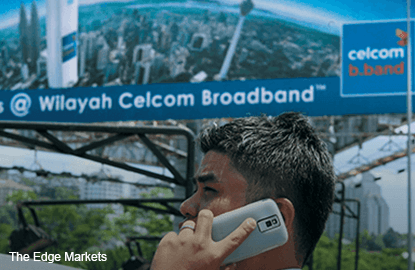
This article first appeared in The Edge Financial Daily, on January 4, 2016.
Telecommunications sector
Maintain underweight: Recently, mobile operators have all made claims of having a superior fourth-generation long-term evolution (4G LTE) network in one way or another.
We are positive on the developments in 4G trends, as operators strive to provide consumers with the best 4G LTE experience.
Referring to the Ericsson Mobility Report, worldwide LTE subscriptions were expected to more than quadruple to 4.1 billion from 850 million by the third quarter of 2015 (3Q15).
Global mobile traffic is forecast to increase at a compound annual growth rate of 45%, between 2015 and 2021, to 51 exabyte per month.
Within this figure, 70% of mobile traffic is expected to be derived from video, which will grow by 55% annually over the same period. Instead of web browsing, consumer preferences are shifting towards video and app-based mobile use.
Mirroring global trends, growing demand for data can be seen through steadily increasing data revenues.
Amid falling traditional voice and SMS revenues, contributions from data to overall revenue have been edging up.
Over the past year, revenue contributions from data for Celcom and DiGi have increased by five to six percentage points to 29% and 41% respectively.
We expect these trends to continue, as data services become more accessible. Helped by the proliferation of mid- to lower-end smartphones, all three mobile operators have seen increasing smartphone penetration rates. Smartphone penetration rates for Maxis, Celcom and DiGi stood at 67%, 59% and 58% respectively as at 3Q15.
Additionally, the increasing availability of faster technologies can encourage the use of data heavy applications. For video streaming, faster speeds provide users with the capability of viewing higher-quality videos with lower buffering periods. Already, Maxis reported that its 4G LTE users consume 2.3GB per month, approximately 37% higher than the average data usage for its users.
We are positive on developing 4G LTE trends, as they allow operators to serve the rising needs for data.
Trends aside, we believe the environment remains challenging in the presence of stiff competition.
Additionally, valuations appear stretched, as the sector is trading at a forward enterprise value/earnings before interest, taxes, depreciation and amortisation of 10.7 times, close to one standard deviation above its historical mean of 10.8 times. As such, we maintain our “underweight” call on the telecommunications sector.
We only have a “buy” call on Telekom Malaysia Bhd, due to its attractive valuation, near-monopoly status in fixed voice and broadband, earnings growth opportunities from its venture into the mobile segment via Packet One Networks (M) Sdn Bhd, and the launch of High Speed Broadband Phase 2 and Suburban Broadband.
We have a “hold” call on Axiata Group Bhd, due to its relatively cheaper valuation, compared with Maxis Bhd and DiGi.Com Bhd, and geographically diversified earnings contributions.
Lastly, we have a “sell” call on Maxis and DiGi, on valuation perspectives and limited growth in their operations that are confined to the domestic sphere. — TA Securities, Dec 31
